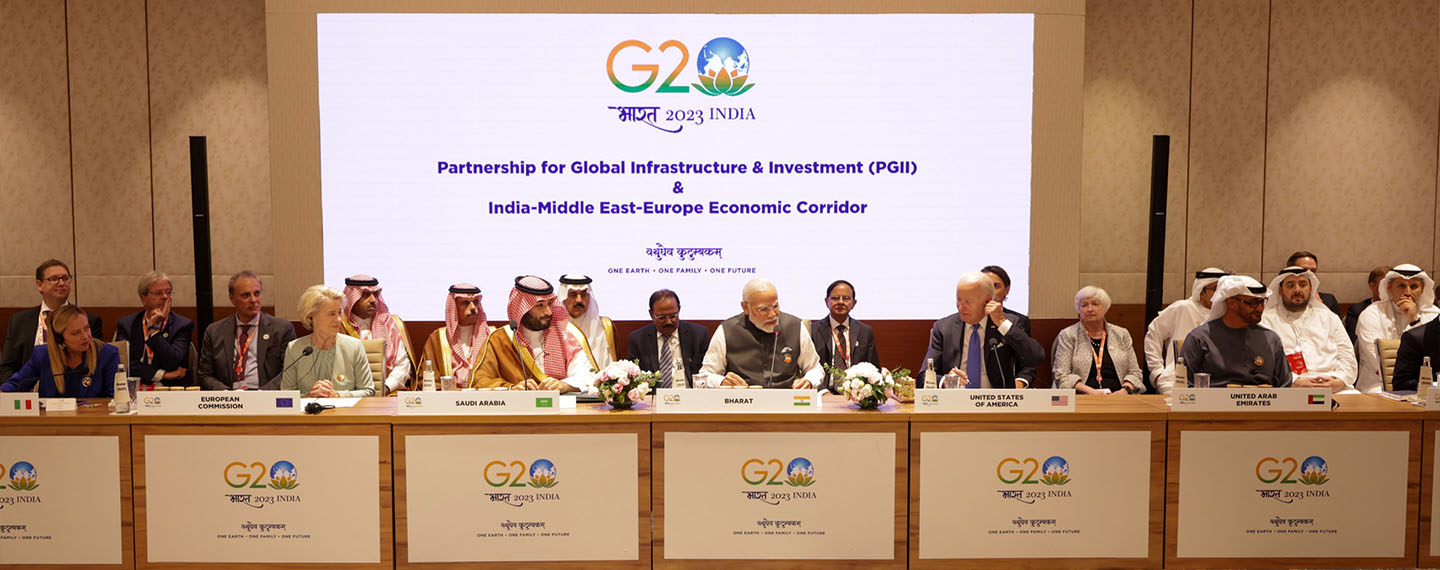At a time of crisis of legitimacy for the G20 as the main forum for international economic cooperation, in a context where the tendency is to establish coalitions and ‘mini-lateral’ agreements between a small number of countries, the G20 has managed to issue a joint declaration, launch a long list of proposals, frameworks, roadmaps and voluntary action plans, and incorporate the African Union (AU) as a new permanent member.
This success, in questions where it was known that there would be agreement, has been accompanied by certain silences and omissions, where it was known that there would be controversy and dispute: the declaration does not include a condemnation of Russia’s invasion of Ukraine –as it did and appeared in the final text of the Bali summit– as well as the absence of Chinese President Xi Jinping and Russian President Vladimir Putin.
In this context, technology has been one of the most prolific areas. In addition to promoting a digital economy with greater legal certainty for businesses, pointing to the need to further deepen the impact of crypto-assets and digital currency, India’s flagship project for the G20 was its Digital Public Infrastructure (DPI) model.
India’s technology positioning strategy
In just under a decade, India has managed to build a series of digital platforms that seek to make data-sharing systems interoperable between the public and private sectors, enabling more than 1.3 billion Indians to have a digital identity card, make payments and access public services instantaneously. Formerly known as “India Stack”, now known as Digital Public Infrastructure (DPI), this project seeks to be exported and replicated in other countries. Hence, a voluntary G20 Framework for IPR Systems, and a plan to build a global IPR repository has been approved.
The One Future Alliance (OFA), a voluntary initiative to build capacity and provide technical assistance and financial support for the implementation of Public Digital Infrastructure in low- and middle-income countries, has also been proposed.
This is no coincidence. India has been conducting science and technology training in its embassies in developing countries since the 1960s. Now, the country is seeking to position itself as a new technology leader in the global competition, a rivalry that is being played out by countries at the technological forefront such as China and the US.
ICT and business process outsourcing services account for a large share of services exports, accounting for US$157 billion over the period 2021-22, or 60% of total service exports. In the international arena, India is chairing this year’s Global Partnership on Artificial Intelligence (GPAI), hosted by the OECD, where it seeks to lead the international dialogue on general purpose AI technologies for responsible and inclusive use. It is also the world’s top country with the highest concentration of AI talent and the highest penetration of AI skills, ahead of all OECD and G20 countries, partly to compensate for job losses in the lower value-added stages of technology manufacturing chains.
India’s strategy is not only proactive. It is also defensive. Given its dependence on China in critical sectors, India has taken several steps to restrict Chinese applications and services, or to investigate the activities of Chinese manufacturers who have had bank drafts seized or been accused of tax evasion. Section 69 of India’s Information Technology Act enables the central government to block access, by invoking emergency powers, to any domain or application deemed a threat to national security.
In addition, due to US sanctions and tightening export control regimes on Chinese semiconductors and other critical technologies, India has emerged as an alternative location for multinationals such as Apple and Samsung to diversify their supply chains away from China. India has been investing in its domestic technology sector to build its own economic and security strategy through both government support and public-private schemes to develop cutting-edge technologies.
G20 as a means for technological competition
Following this path, the G20 Summit has also witnessed a growing technological rivalry. If in previous summits the digital transformation pillar was seen as a more technical (policy) area, the truth is that technology has become more politicised than ever on this occasion (politics). In the specific ministerial meeting on the Digital Economy, China and Russia refused to include some paragraphs on the geopolitical implications of digital transformation.
This does not mean that India is taking a stand against China and Russia in all areas. India has moved from a policy of non-alignment to multiple alignments. Just as it limits the presence of Chinese technology companies on its territory, India continues to belong to the BRICS group, where it shares negotiations with China, Russia, Brazil and South Africa, and will be joined from 2024 by Argentina, Egypt, Iran, the United Arab Emirates, Saudi Arabia and Ethiopia.
At the same time, India cooperates with countries belonging to coalitions and ‘minilaterals’ of different sizes and hues. One of the major milestones of this G20 summit has been the launch of IMEEC, the India-Middle East-Europe Economic Corridor, which will connect these three regions with railways, shipping lines, high-speed data cables and power lines. The rail and maritime corridor are part of the Global Infrastructure Investment Partnership (or GPII), a collaborative initiative between the G7 countries. The combined GDP of the IMEEC participating states –India, Saudi Arabia, the United Arab Emirates, the US, France, Italy, Germany and the EU– totals US$47 trillion, or almost half of the world’s GDP, a hugely significant figure.
IMEEC, along with the Trans-African Corridor, also announced during the summit, has been seen in two ways: either as a project that represents a new model of global interconnectedness, which does not bring together ideologies or entail a security alliance; or as a counter-offensive to China’s Belt and Road Initiative, which created the China-Pakistan Corridor and connected the Chinese city of Kashgar to the Pakistani port of Gwadar via the Kashmir region, a hotspot of tension between Pakistan and India.
The 2023 G20 Summit has shown that the chairing country plays a key role in its success, in the number of initiatives and in the focus of these initiatives.
Brazil, which will chair the G20 in 2024, wants to focus on connectivity, AI, information integrity and digital governance. The G20 has not necessarily revived multilateralism –which is in decline in favour of ‘minilaterals’– but it has brought to the table interests and who has the most power to implement them.
The multiple alignments endure. The difference is that more countries –under the hat of the AU– have joined, key decision-makers on the global agenda by virtue of their relevance and vote totals, and that a global infrastructure megaproject has been created that seems to seek to compete at the same level of ambition as the Chinese model did. India has gained in geopolitical vigour, but only results will show whether it succeeds.



